When your ATV keeps fouling spark plugs, there is likely an underlying issue that should be addressed before installing new plugs.
Fouled spark plugs can cause engine misfiring, reduced engine power, poorer fuel economy, rough idling, increased emissions, and in some cases, not being able to start the engine at all.
In this post, we’ll have a look at what could be causing an ATV to foul spark plugs and what you can do to prevent it from happening. While the post is written with ATVs in mind, the same basic principles apply to all gasoline engines.
Page Contents
A spark plug is considered fouled when the ceramic insulator, center electrode, and a ground electrode at the firing tip becomes coated with a foreign substance such as fuel, oil, carbon, or coolant.
Several substances can foul a spark plug, but the most common are:
Which substance is causing the fouling will usually determine the appearance of the plug.
On a clean and undamaged spark plug, electricity is sent from the coil through the plug’s center electrode, creating a spark when it bridges the gap over to the ground electrode. The ceramic insulator prevents the current from going straight to ground.
The coating on a fouled plug prevents the insulator tip of the plug from doing its job.
Electric current will always choose the path of least resistance, and the deposits covering the ceramic insulator have less resistance than the insulator itself. This causes the current to leach from the tip, past the insulator, and into the metal shell, where it will ground out without creating a spark.
Without a strong and consistent spark, the plug can no longer ignite the fuel/air mixture properly, which causes misfiring and further fouling.
It is said that a spark plug is like the canary in a coal mine. If you know how to read its appearance, it will not only tell you when something is wrong with the engine; it will even tell you what may be causing the problem.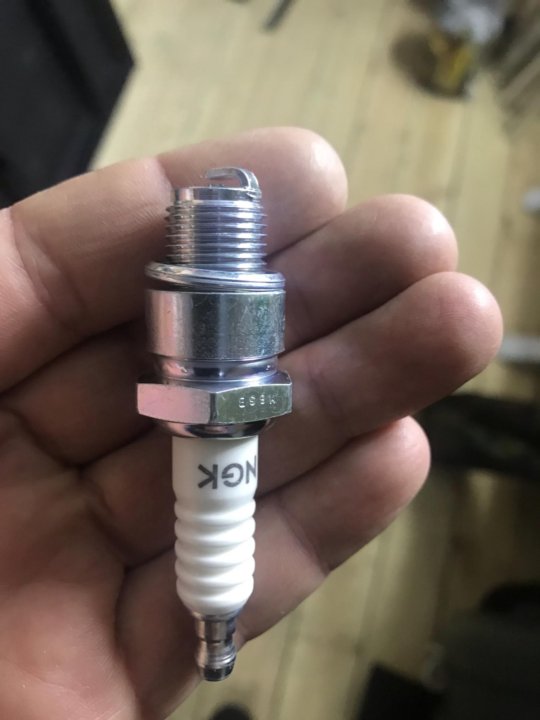
Appearance: When a spark plug is operating at an optimal temperature in an engine that’s in good condition, it will get a brown, almost tan, or light grey appearance. This type of coloring on a spark plug is not considered fouling.
Appearance: A carbon fouled plug has a grey to matte black fluffy appearance that is evenly distributed over the center electrode, ground electrode, and the porcelain tip.
Symptoms: Hard starts, power loss, rough idle, slow acceleration, misfiring, sputtering, poorer fuel economy, increased emissions.
How does it happen? Carbon fouling occurs when carbon residue, for some reason, is adhering to the firing end of the spark plug.
As long as the fuel-to-air ratio is correct and the spark plug runs at the right temperature, the plug is self-cleaning. Meaning, it will burn off any carbon deposits and thereby avoid fouling.
However, when an issue is causing incomplete combustion, if the firing temperature for some reason drops too low, or if the fuel-to-air ratio becomes too rich, the plug may no longer be able to burn off all the carbon.
Carbon residue will gradually begin accumulating to the firing end of the plug until it eventually fouls completely.
A gasoline engine needs a near-perfect balance between fuel and air for optimal combustion.
Many components come into play to deliver the right air-fuel mixture to the combustion chamber, and any one of them can throw the ratio off-balance.
The air-fuel mix can become too rich either when an issue is causing excess fuel flow or when there is too little air at disposal in proportion with the gasoline.
Too much fuel can decrease the plug tip temperatures to a point where it is no longer self-cleaning, allowing carbon deposits to accumulate.
Too much fuel will also cause incomplete combustion, where not all of the fuel gets ignited. The hydrocarbons from the unburnt fuel tend to stick to hot portions of the plug, such as the center electrode, ground electrode, and insulator tip, forming a layer of carbon deposits.
 As altitude increases, the engine gets less air as atmospheric pressure decreases. Consequently, it needs less fuel to maintain the proper air/fuel ratio.
As altitude increases, the engine gets less air as atmospheric pressure decreases. Consequently, it needs less fuel to maintain the proper air/fuel ratio.If only one plug is affected, the issue may be with the corresponding fuel injector. Make sure one or more of the fuel injectors are not stuck open or leaking.
If all plugs are equally fouled, the fuel pressure may be too high, causing a rich condition. Make sure the fuel pressure regulator is not defective and that the fuel return line is not plugged.
If the oxygen sensor is defective and reads a lean condition, it will do what it can to make the mix richer.
Ask a mechanic to use a scan tool to check your engine’s fuel trim readings. Negative fuel trim readings of minus 8 to minus 10 or more indicate a rich condition.
The job of the choke valve is to restrict airflow to the carburetor to enrich the fuel-air mixture. This makes it easier to start the engine in low-temperature conditions but may lead to carbon fouling if left on too long.
Make sure that the choke valve is adjusted to spec and is opening and closing as it should.
If dirt or any object is restricting airflow, there won’t be enough air to ignite all fuel that enters the combustion chamber.
Clean or replace the air filter if necessary, and make sure there are no obstructions in or in front of the air intake that may restrict airflow.
A vacuum leak may send the fuel mix out of balance into a rich condition. Make sure all vacuum hoses are connected, undamaged, and without any kinks that may obstruct airflow.
When air temperature and humidity increases, air density will decrease.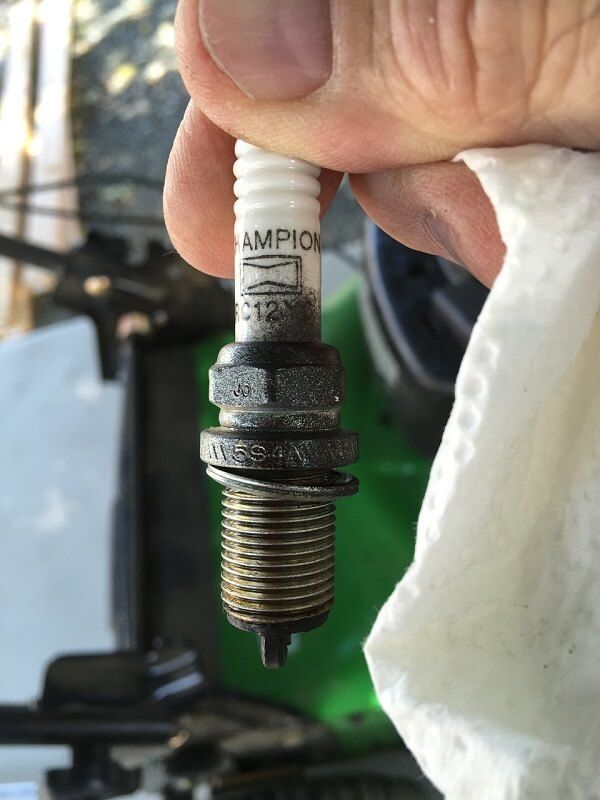 This can cause the fuel mix to become too rich since the amount of air gets reduced.
This can cause the fuel mix to become too rich since the amount of air gets reduced.
It’s a common misconception that the heat range or heat rating of a spark plug is related to the spark’s temperature or intensity, but this is false.
The combustion process heats the spark plug’s firing end, and this heat needs to go somewhere to prevent overheating. Most of the heat is directly transferred to the engine via the cylinder head.
The plug’s heat range tells us at what rate the plug can dissipate its firing head heat to the cylinder head. This property is also known as the plug’s “thermal performance.”
The temperature at the firing end of a spark plug needs to be hot enough so that it burns off deposits and prevents fouling. Simultaneously, it must be low enough to avoid overheating the firing end, causing pre-ignition that may lead to severe engine damage.
 When in this temperature range, carbon deposits will burn off the spark plug tip, making it self cleaning.
When in this temperature range, carbon deposits will burn off the spark plug tip, making it self cleaning. You achieve optimal thermal performance by using plugs with the correct heat rating for your engine. Please refer to your service manual or ask a dealer to find the right plug.
The factory recommended plugs are sufficient for most ATVs. If your bike is modified to increase engine performance or run under extreme light or heavy loads, you may consider choosing an alternative heat range.
The engine needs to run under some load for a while before the spark plugs reach the self-cleaning temperature of a minimum of 450°C (842°F).
Certain riding applications and behavior may prevent the plugs from heating up properly, eventually leading to spark plug fouling.
ATVs with a fuel-air mixture that is too rich or that has a spark plug with a heat range that is too cold are particularly prone to fouling under conditions as listed above.
To prevent fouling, you should allow the engine to heat up properly regularly by going for a long and active ride (30 mins +).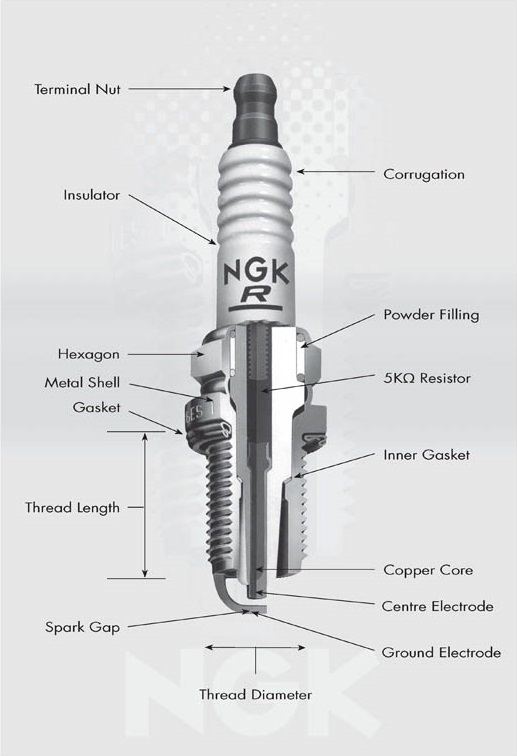 Alternatively, you can add load by attaching a trailer or bring some cargo to make the engine work a bit harder.
Alternatively, you can add load by attaching a trailer or bring some cargo to make the engine work a bit harder.
The spark plug gap is the distance measured between the firing electrode and the grounded electrode.
Although most spark plugs come pre-gapped from the factory, the gapping may not be right for your particular engine.
Riding with an incorrect gap may lead to a higher misfire rate, power loss, poorer fuel economy, increased plug wear, and spark plug fouling.
Use a wire style gap tool to check if the gap is according to manufacturer specifications. Wire style gap tools are more gentle than the older coin style tools.
If the gap needs adjustment, it’s only the grounded electrode that should be moved. Be careful not to pry against the center electrode or insulator as they may quickly get damaged.
When fuel injectors get clogged by carbon deposits, it may alter the fuel pattern from a mist into a stream.
The poorer fuel dispersion will cause less efficient or incomplete combustion inside the combustion chamber.
In turn, poor combustion causes spark plug carbon fouling because of excess unburnt fuel in conjunction with the spark plug not reaching a high enough temp for it to self-clean.
A weak spark will lead to incomplete combustion and prevent the spark plug tips from reaching a self-cleaning temperature.
A weak spark can simulate a rich air-fuel mixture, where not all of the fuel gets ignited. Over time, this will cause the plug to carbon foul.
The symptoms of a weak spark are most visible at startup. The engine will flood very quickly, and built-up, unburned fuel will cause the occasional backfire, mainly if you apply too much throttle when trying to start the engine.

In sub-zero temperatures, you may find that the gasoline cannot form a fine mist and, therefore, won’t mix as well with the air. Liquid gasoline that enters the combustion chamber will lead to incomplete combustion.
Appearance: A fuel fouled plug will be wet with gasoline immediately after removing it from the engine but dries off quickly when out in the open. The gas may be covering a plug that is otherwise in good condition, or it is soaking a carbon fouled plug into a wet, dark finish.
Symptoms: Hard starts and flooding.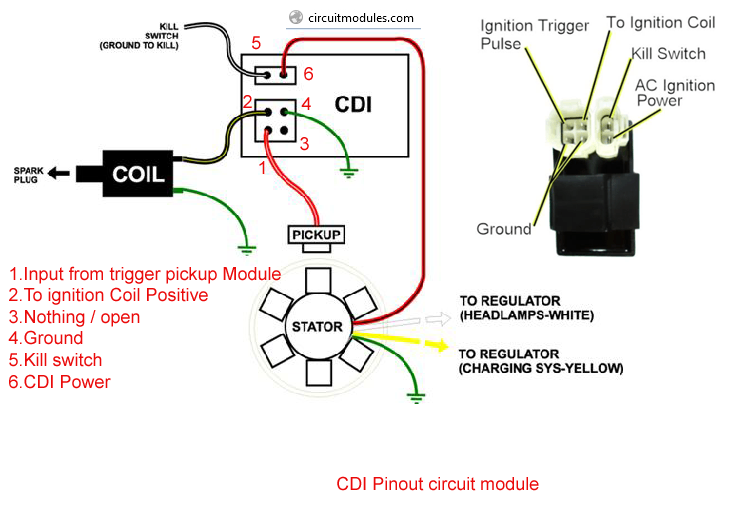 Suppose you can start the engine: sputtering and misfiring. A machine with wet foul sputtering will experience poor gas mileage, power loss, and hard cold starts.
Suppose you can start the engine: sputtering and misfiring. A machine with wet foul sputtering will experience poor gas mileage, power loss, and hard cold starts.
How does it happen?
The fuel that enters the combustion chamber is not being ignited, leaving the spark plug soaked in unburned gasoline.
Flooding happens when you repeatedly try to start a carbureted engine without it firing up.
Excessive pumping of the throttle to start the engine will only add to the problem by inducing more fuel to the combustion chamber.
The carburetor may have internal problems that allow too much gas into the engine. Typical curl pits to look in are a bad float or a leaky inlet needle valve or a choke valve stuck shut.
A carb is adjusted way off or is fitted with far too large jets; it will pump too much fuel into the combustion chamber.
A failed or partly failed ignition will prevent the gas from igniting. The list of possible causes of a failed ignition is long, but here are the most common.
Low engine compression can lead to misfiring. Misfiring can, in turn, damage the plug wire or coil boot. A damaged ignition wire can lead to wet fouling as it won’t provide a spark to ignite the fuel.
Before replacing the ignition wires, it’s a good idea to trace the root cause of what started this bad cycle in the first place.
The spark plug gets its current from the ignition coil. When the coil goes bad, there is no longer a current to ignite the fuel-air mix.
Dirt or moisture outside the spark plug may create a conductive path that shorts the ignition current to ground without making a spark.
Cracks in the spark plug ceramic insulator can be internal, making them a bit hard to identify. When the insulator cracks, the plug may short to ground, failing to provide a spark.
A too-large spark plug gap may lead to carbon fouling, but a gap that is too narrow or completely closed may leave the plug enabled to provide a strong enough spark to ignite the fuel.
The crankshaft position sensor generates an electrical signal that is used to control fuel injection and ignition timing.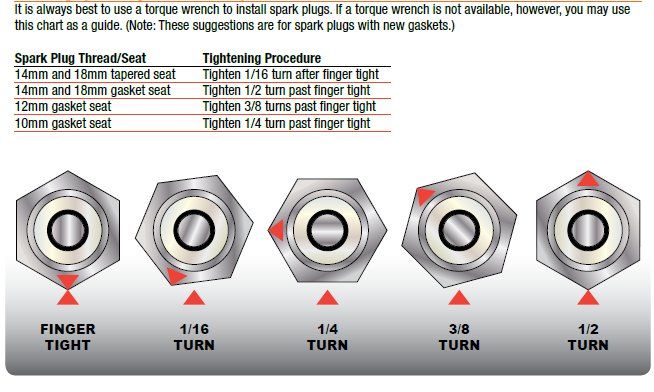 When the sensor fails and no longer sends a signal, the ignition system will no longer provide a spark.
When the sensor fails and no longer sends a signal, the ignition system will no longer provide a spark.
When a fuel-injected engine wet foul spark plugs, it may be one or more fuel injectors leaking, there may be excessive fuel pressure, or the cold start injector valve may be stuck open.
Appearance: An oil fouled plug has a black, oily film covering the plug’s firing end. The coating is not evenly distributed as on a carbon fouled plug but rather blotchy and inconsistent as oil tends to draw against the plug’s colder parts.
An oil fouled plug may also be covered with white, ashy deposits caused by burnt oil additives.
Symptoms: Hard starts, misfiring, grey or white exhaust smoke (particularly after initial startup, may clear up as the engine heats up), and loss of oil.
How does it happen? Oil fouling occurs when engine oil, for some reason, enters the combustion chamber where it disrupts the ignition process by contaminating the fuel-air mixture.
Oil fouled spark plugs may be a sign of internal engine problems. A compression test, as well as a leak down test, may help you identify what is causing your plugs to foul.
When the valve guides or valve guide seals wear, they may allow some oil to dribble down the valve stems and into the combustion chamber.
Simple test: Start the engine in neutral and allow it to idle for about 5 minutes. Then apply a short burst of full throttle. If you notice a puff of smoke, leaky valve guides or valve stem guides is likely your problem.
The piston rings’ main job is to create a tight seal between the piston and cylinder walls. This will prevent oil fumes and drops in the crankcase from entering the combustion chamber.
Piston rings may wear, break or crack and the cylinder walls may develop grooves or scoring.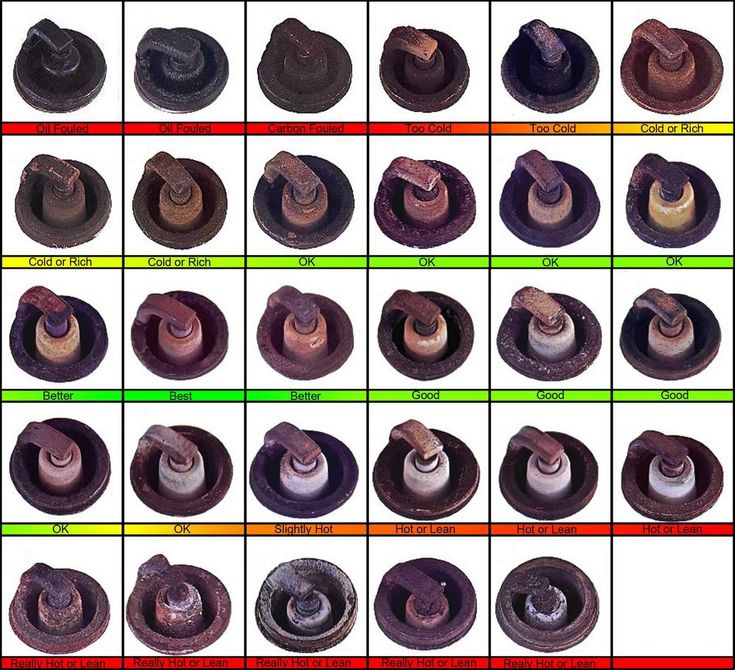 All of which may allow some oil to get into the combustion chamber to foul the spark plugs.
All of which may allow some oil to get into the combustion chamber to foul the spark plugs.
Simple test: Start the engine in neutral and apply about ⅓ throttle for about 5 minutes. If smoke clouds start building up, you know that your issue is likely with the piston rings or cylinder walls.
The breather and breather valve allows fresh air to enter the crankcase so that the PCV valve can extract oil fumes.
If one of them gets clogged, the pressure will build up in the crankcase, forcing oil up past the piston rings or up the overflow tube and into the inlet manifold. This is also known as positive crankcase ventilation.
Vacuum in the cylinder may cause similar behavior by drawing oil fumes past the piston rings.
Appearance: Coolant fouling leads to ashy or chalky white deposits on the spark plug’s firing end. The appearance may change a little, depending on what type of coolant is being used.
In some cases, the plug may appear suspiciously clean due to the steam from the boiling coolant.
Symptoms: Hard starts, misfiring, coolant level dropping, and white exhaust smoke.
How does it happen?
Coolant fouling happens when coolant/antifreeze, for some reason, enters the combustion chamber where it contaminates the fuel-air mixture.
Note that modern coolants do not cause fouling as quickly due to a reduction of zinc, phosphate, and other additives that can leave deposits on the firing end of the plug. This may lead to running with an undiagnosed coolant leak for an extended period while the plugs slowly become fouled.
Coolant fouled spark plugs is bad news as it usually means expensive engine repairs.
Coolant is not supposed to enter the combustion chamber under any circumstance. Components such as the head gasket, intake manifold seal, and others make sure this does not happen.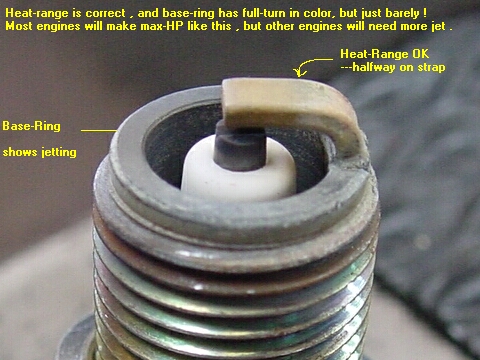
A coolant fouled spark plug can be an early sign that any of these are starting to leak.
As a temporary fix, you may try adding some cooling system sealer to the coolant. In the long run, you may be looking at an engine overhaul.
Make sure to pressure test the cooling system to diagnose your potential leak before installing new spark plugs.
After identifying and fixing the underlying issue that was causing your spark plugs to foul in the first place, it may be tempting to save a few dollars by repairing and reusing the old plugs, but can you?
A light carbon fouled spark plug may become clean by going for a long ride to get the engine properly warm or pulling a heavy load, as this will burn off excess carbon.
A heavy carbon fouled spark plug that is causing the engine not to run correctly cannot be repaired and needs to be replaced.
Some recommend sandblasting the firing end of the plug, but that is considered a short term fix at best. When the porous ceramic insulator becomes properly carbon fouled, there is no way of removing all of the carbon.
When the porous ceramic insulator becomes properly carbon fouled, there is no way of removing all of the carbon.
Wet fouled spark plugs with no carbon buildup can be reused after allowing it to vent dry. You can leave them in the engine to dry or remove them to speed up the process.
As an alternative, you may try spraying some starter fluid into the throttle body while cranking the engine, as the plugs will dry if you can get the engine going.
After identifying and correcting any underlying mechanical or adjustment issues that may cause spark plug fouling, here are a few other tips on what you can do to minimize the risk of fouling.
Some people use a hotter range plug to compensate for fuel or oil fouling, but this is generally not recommended, as it will reduce the pre-ignition safety margin.
A much better approach is to identify and correct the underlying issue that is causing the plug to foul in the first place.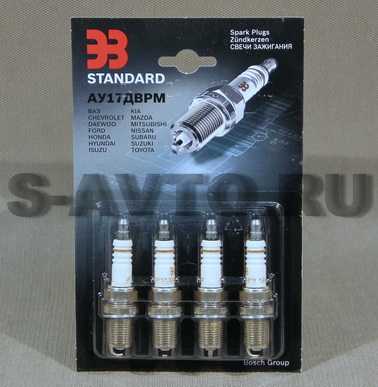
Leaving the choke on for too long is a common cause of carbon fouling.
If avoiding riding situations that don’t heat the engine appropriately altogether isn’t an option, it is recommended to go for longer rides regularly to allow the plug to heat up enough to where it self cleans.
A high flow air filter will cause a slightly leaner condition. In some cases, this may be all that you need to increase fouling resistance by making the plugs run a bit hotter.
Some manufacturers offer spark plugs that are designed to be more resistant than standard plugs. They achieve this by using specific alloys of precious metals in the electrodes, such as Iridium and platinum.
Blach spark plugs are a sign of carbon-fouling or oil-fouling.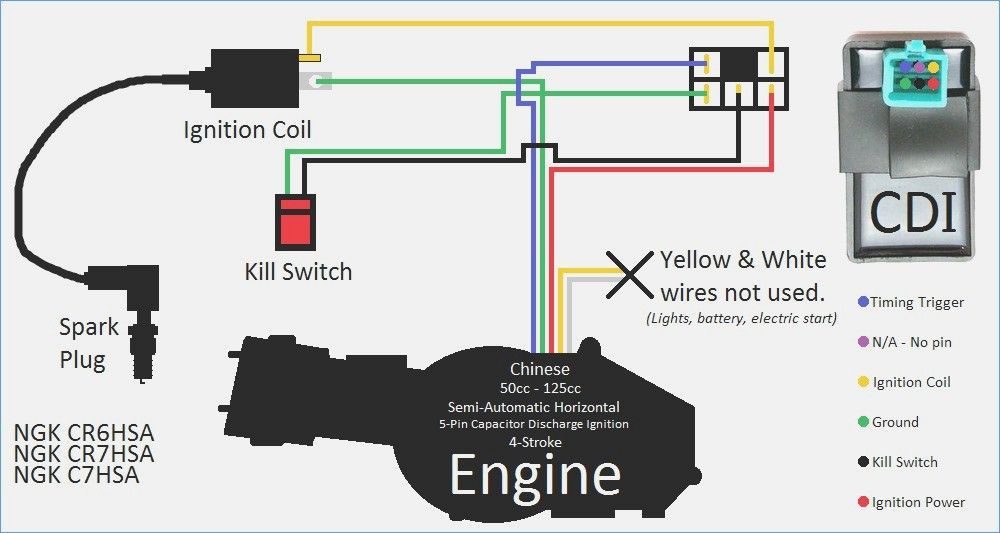 This happens when the plug cannot ignite all of the fuel or when oil enters the combustion chamber.
This happens when the plug cannot ignite all of the fuel or when oil enters the combustion chamber.
Sources:
Spark plugs play a vital role in the performance of your ATV’s engine. During the course of inspecting and performing maintenance on your ATV, you may have noticed that one or all of the spark plugs is black.
If your ATV spark plug is black, it is likely due to an overly rich fuel mixture, an oil leak, or because the engine has been flooded. Overly rich fuel mixtures are almost always a result of carbon buildup, and an oil leak can be caused by bad O-rings, gaskets, pistons, or shotty valve guides.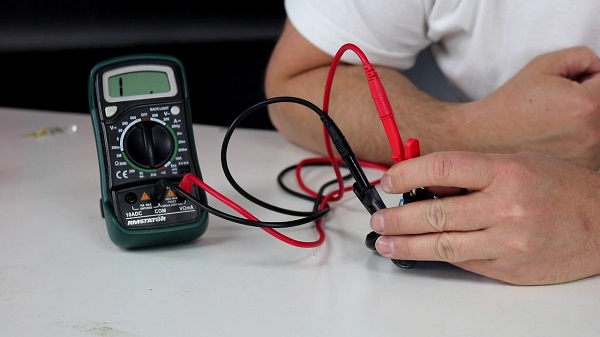
In this article, we will briefly explain how spark plugs work for anyone who is not sure. Next, we will go over what it means when your spark plug is black, as well as how to rectify the problem at its source. Finally, we will explain how to change a spark plug and how often this should be done.
For any combustion engine to function, the inclusion of working spark plugs is necessary.
The purpose of a spark plug is to create a spark and ignite the air/fuel mixture. It does this by creating what is known as a “spark gap” wherein electricity produced by the engine’s ignition system tries to seek a ground pathway, and in doing so, arcs across from the ignition coil to the combustion chamber, creating a spark.
This process creates a miniature explosion, which then powers the engine and allows it to run.
This is, of course, a very layman explanation of an incredibly complex process, but for the purpose of this article, a broad understanding will suffice.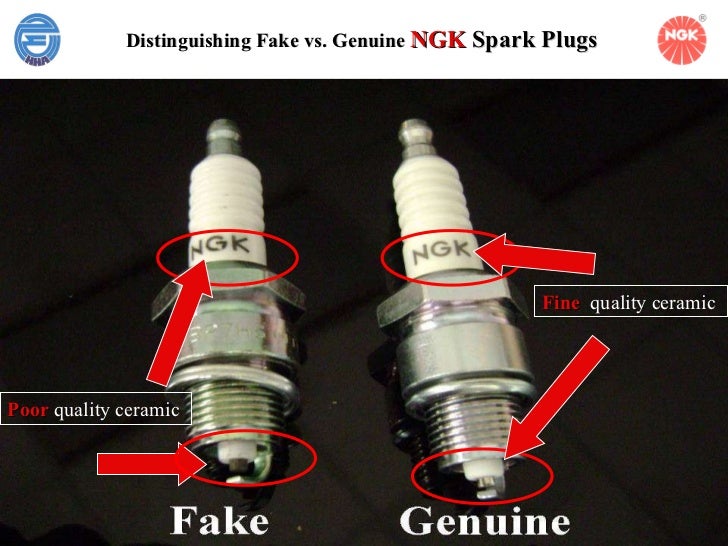
For a more comprehensive explanation of a spark plug’s nuanced functions, see this article from Mobil.com.
Here’s a quick animation showing how a spark plug works in action:
When there is a problem with your engine, the spark plug may give us some signs. Sometimes the spark plug may appear dry and white due to overheating, or it may appear corroded and rusted; but for this article, we want to know what has caused your spark plug to go black.
There is no one size fits all blanket explanation for why your spark plug is charred, but based on its look, we can make some very safe assumptions and narrow down the root cause.
Here we will discuss possible causes and what to look for.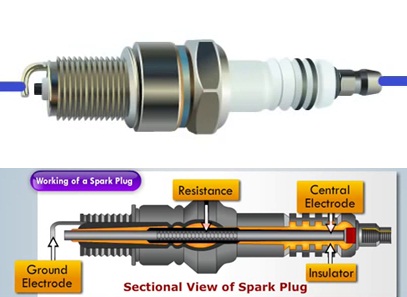
One of the things that happen in ATV engines is that the fuel mixture can become overly rich and lead to an excessive buildup of carbon. Carbon buildup is a buildup of crud that occurs in an engine’s air intake and exhaust systems.
Eventually, this buildup of carbon begins to inhibit the airflow of the engine, making it, so the fuel/air mixture in the engine’s combustion system is overly rich with fuel.
Because electricity always seeks the path to the ground of least resistance, it may begin to bypass the spark plug in favor of the carbon deposits, effectively negating the spark plug and reducing the ATV’s engine’s performance as a whole.
The leading cause of carbon buildup is more or less just a lack of upkeep and regular care. Always check and change the engine oil frequently and when necessary.
New and clean oil will begin to dissolve the built-up carbon, allowing it to be flushed through and trapped in the oil filter. Change your oil filter routinely as well.
Another common reason that an ATV’s spark plug may have been blackened is that it gets wet by way of engine flooding.
When we speak of a flooded engine, we refer to the process wherein unburned fuel sits in the engine. In turn, this unburned fuel soaks the spark plug and makes it either not start at all or increases the difficulty of doing so.
The most typical way this will occur is when the engine is started up and then immediately turned back off. The engine is not given enough time to burn off the fuel, and it floods the engine.
If necessary, release the carburetor’s drain screw and allow the fuel to be drained. You may be able to avoid draining the carburetor by simply replacing the wet, oily spark plug with a new dry one, however.
Often, ATV users who encounter a flooded engine that will not allow their vehicle to start will remove the spark plug and use a torch and other tools to clean and dry off the spark plug’s exterior.
This may be useful in a pinch, but we strongly recommend that you just replace the plug and save yourself the complications and hassle.
High-quality spark plugs are very inexpensive and last a long time, so acquiring a new one should not be much trouble.
The third likely cause of a blackened spark plug is an oil leak that has made its way to the wells which house the spark plugs.
There are multiple potential causes of this, and you will need to search around for the root of the problem.
The most probable sources of oil leaking into the spark plug wells are bad washers, faulty gaskets, and worn out deteriorating O-rings.
You can also look for the source of an oil leak is the piston or the valve guides. Once you have pinpointed the source of the oil leak, replace whatever part is causing it.
Also, replace the oily spark plugs as they are now compromised. Recheck soon after repairing to ensure that the problem has been resolved.
Replacing a spark plug is a relatively simple and easy process that can save you time and money instead of having it done by a professional mechanic.
Begin by removing the spark plug wire, which will usually (but not always) appear as a colored wire with a plastic attachment piece, sometimes bent at 90 degrees. The attachment should simply pull right off.
Once you have removed the wire, use a wrench to carefully unscrew and remove the old spark plug. Screw your new spark plug into the hole, ensuring that it is secure but not excessively tight.
In general, it is recommended to replace your ATV’s spark plug following every 100 hours of ride time.However, this will depend on the age of the vehicle, the intensity of the riding, and the climate.The 100-hour recommendation is just a general guideline, and the ATV owner/rider should always be mindful of watching for signs of a bad spark plug.
The most common signs it’s time to replace your spark plug are:
If you require a new spark plug for your ATV, we recommend the X-PRO A7TC Spark Plug (link to Amazon).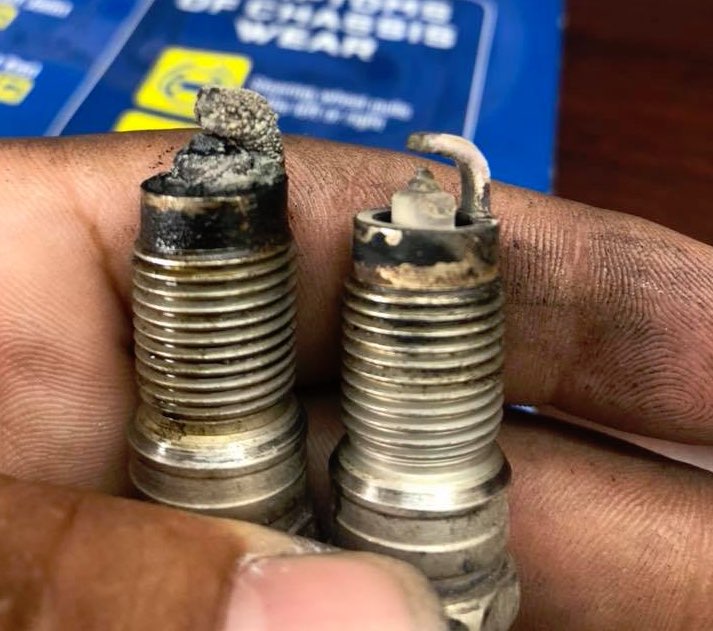 This spark plug is designed specifically for all-terrain vehicles and comes at a very low price.
This spark plug is designed specifically for all-terrain vehicles and comes at a very low price.
In this article, we sought to provide the reader with a comprehensive explanation of why their ATV’s spark plug has been rendered black and what they may do to fix it once the problem has been identified.
There are three primary reasons why this may have happened. Either the engine is leaking oil into the plug well, the fuel mixture is overly rich and lacks airflow, or the engine has been flooded, causing the spark plug to be wetted with oil and made unusable.
Ride safe and have fun!
Sharing is caring!
From cars and lawn mowers to ATVs and motorboats, internal combustion engines can be found in virtually all vehicles that use spark plugs to provide the ignition process. On the one hand, these little “wonder helpers” consume high-voltage electricity, and on the other hand, they give out a spark.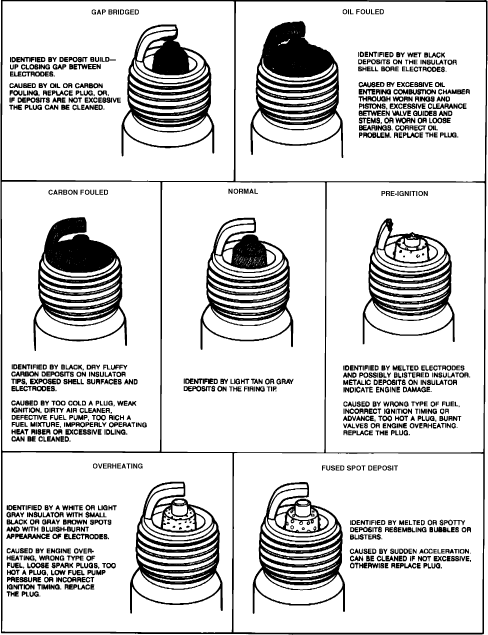 The spark ignites the fuel mixture in the engine, thereby providing the combustion process that keeps the engine running. Without the spark plugs, the engine would be unable to start, so spark plug failures can cause the engine to stop completely.
The spark ignites the fuel mixture in the engine, thereby providing the combustion process that keeps the engine running. Without the spark plugs, the engine would be unable to start, so spark plug failures can cause the engine to stop completely.
Tables:
List of possible symptoms of bad spark plugs:
Damaged or dirty spark plugs can cause a variety of problems including increased fuel consumption, slow acceleration, misfiring and starting problems.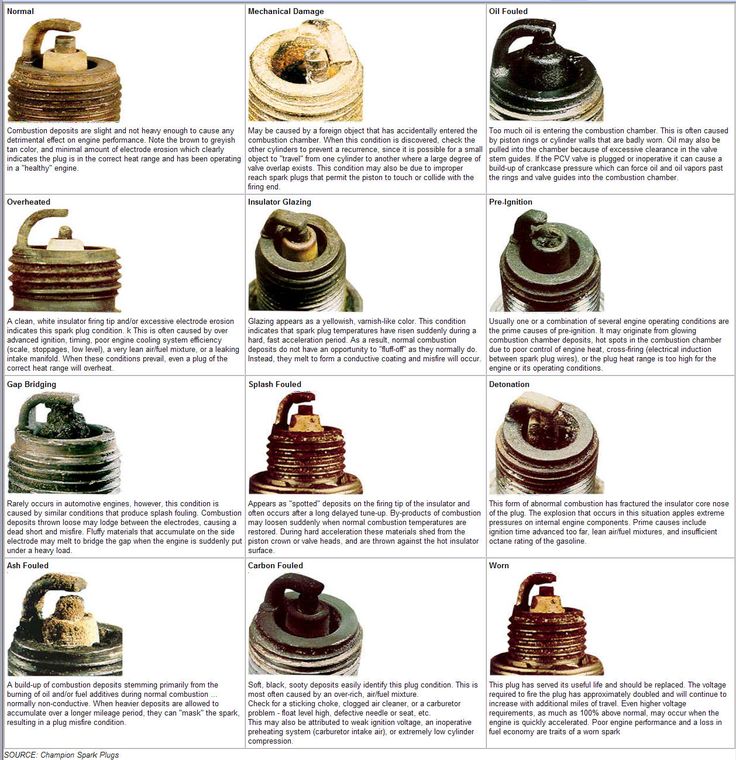 If you're having problems with your engine, the first thing you should look at is the spark plugs - this is a good place to start figuring out what's causing it.
If you're having problems with your engine, the first thing you should look at is the spark plugs - this is a good place to start figuring out what's causing it.
By examining the condition of your engine's spark plugs, you can get an idea of how well your engine is performing. You can make this check part of the regular maintenance of your car, ATV, lawn mower, or motorcycle, or you can do it whenever you suspect something is wrong with the engine.
The first step is to remove the spark plug that needs to be examined. Take the spark plug and inspect it for signs of damage. Pay special attention to the end of the candle that was screwed into the cylinder and examine it. It is highly likely that you will notice one of the following signs on it.
During normal operation of the spark plug, brown or grayish-brown deposits can be found on its ground electrode. If they are, then everything is in order with the spark plug, it can be installed back into the cylinder.
Black dry soot on the electrodes and tip of the insulator indicates carbon contamination. This can be caused by a dirty air filter, driving too long at low speeds, too rich an air/fuel mixture, or idling too long. A car mechanic can advise on what type of spark plugs to purchase to replace a damaged one, but you may want to consider switching to a "hotter" spark plug (the lower the glow number of the spark plug, the higher its temperature).
Black dry soot on the electrodes - a sign of faulty spark plugsBlack oil deposits on the electrodes and the tip of the insulators indicate contamination of the spark plug with engine oil. Oil can leak into the cylinders due to worn pistons or valve guides. It is very important to locate the source of the leak, consult a mechanic for more detailed instructions. Once the cause of the faulty spark plugs has been resolved, the spark plug can be changed.
The photo clearly shows oil deposits on spark plugs A wet spark plug can be the result of something called "flooding" of the engine.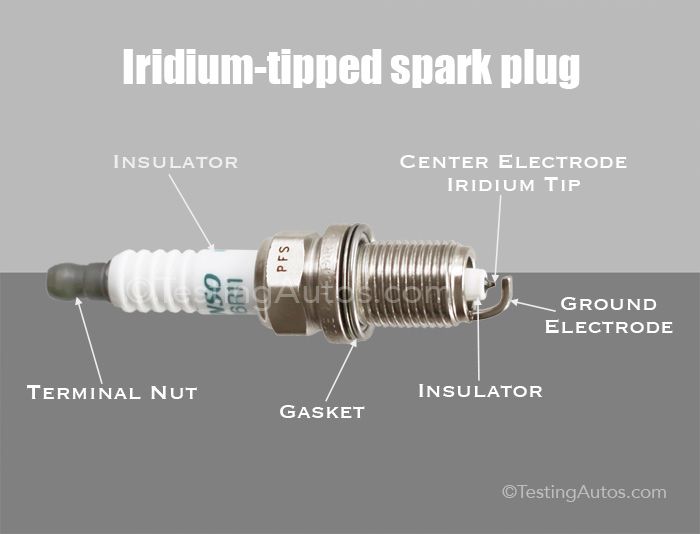 This situation occurs when you repeatedly try to start the engine several times, but without igniting the fuel mixture. In this situation, you can clean the spark plugs or just wait until they dry themselves.
This situation occurs when you repeatedly try to start the engine several times, but without igniting the fuel mixture. In this situation, you can clean the spark plugs or just wait until they dry themselves.
Dross on the tip of the insulator, melted electrodes or white deposits are signs of a burnt spark plug that is exposed to too high temperatures during operation. Causes may include: engine overheating, incorrect spark plug operating temperature range, worn spark plug, incorrect ignition timing, or too dry air/fuel mixture. The spark plug needs to be replaced.
White deposits on tip of spark plug insulatorWorn and thinned electrodes are a sign that the spark plug has already worked out its life. The spark plug has been in the engine for too long, so it should be replaced.
If the electrodes are broken or flattened, there is a good chance that the wrong spark plugs were installed.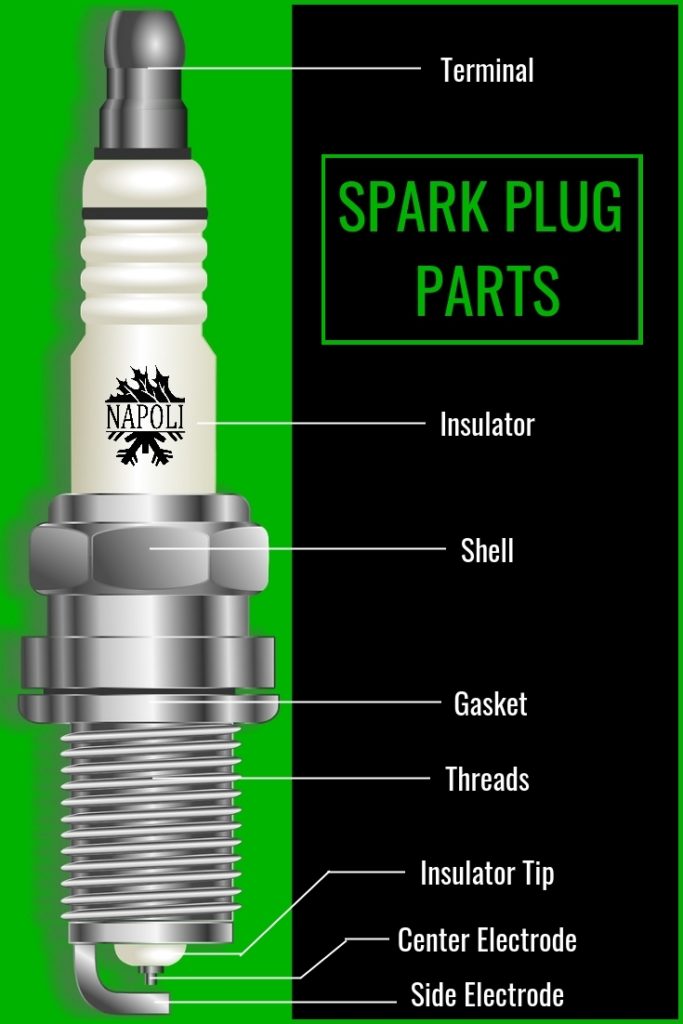 A spark plug that is too long can cause severe engine damage, while a spark plug that is too short will result in increased fuel consumption and clogged spark plugs. Check the owner's manual to make sure the engine is using the manufacturer's recommended spark plug type.
A spark plug that is too long can cause severe engine damage, while a spark plug that is too short will result in increased fuel consumption and clogged spark plugs. Check the owner's manual to make sure the engine is using the manufacturer's recommended spark plug type.
Sorry, we couldn't find the page you were looking for. We probably did something wrong and now we will try to fix it. In the meantime, try one of the following options:
Back to Home
Articles and reviews
A traffic accident is always stressful, especially if it happens abroad. Even an experienced driver is difficult to navigate the actions and solve the problem without losing calm. In order for the settlement of road accidents to take place according to a single scheme in a civilized way, states are connected to the international insurance system - the Green Card.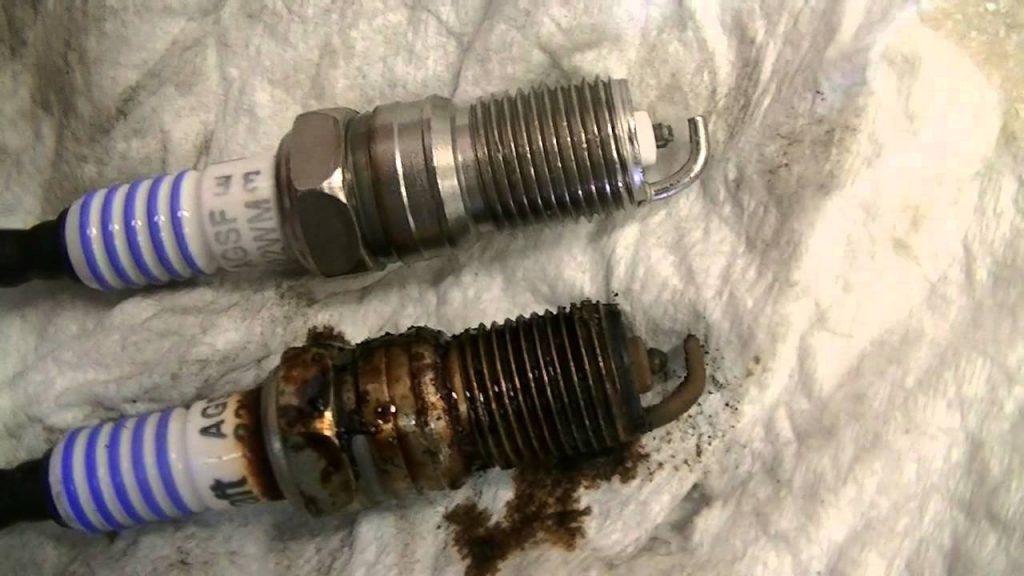 However, it does not work during...
However, it does not work during...
Maintenance and advice
Alloy wheels are one of the easiest ways to add personality to a car and slightly improve its behavior on the road. Over the past 10 years, the demand for light alloy wheels has increased by more than 5 times. Along with a huge number of models of high-quality European and Asian discs, fakes have massively flooded the market. Experts...
Maintenance and advice
Each motorist in the process of operating his car must have a basic knowledge of its technical characteristics and monitor the current state of the car.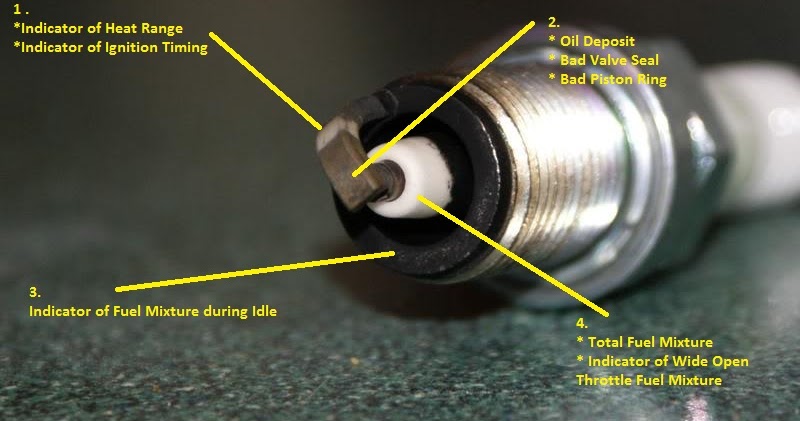 For a comfortable car ride and a long service life of the main units, it is necessary to change the engine oil in time, monitor ...
For a comfortable car ride and a long service life of the main units, it is necessary to change the engine oil in time, monitor ...
Maintenance and advice
What is the most important part of a car? We are sure that most motorists will agree in disputes: someone will argue that this is an engine, since it sets in motion and is essentially the basis of a car, while others will talk about the body, since without a “box” on which everything is attached, it is far from leave. However, few remember the functional...
Service and advice
